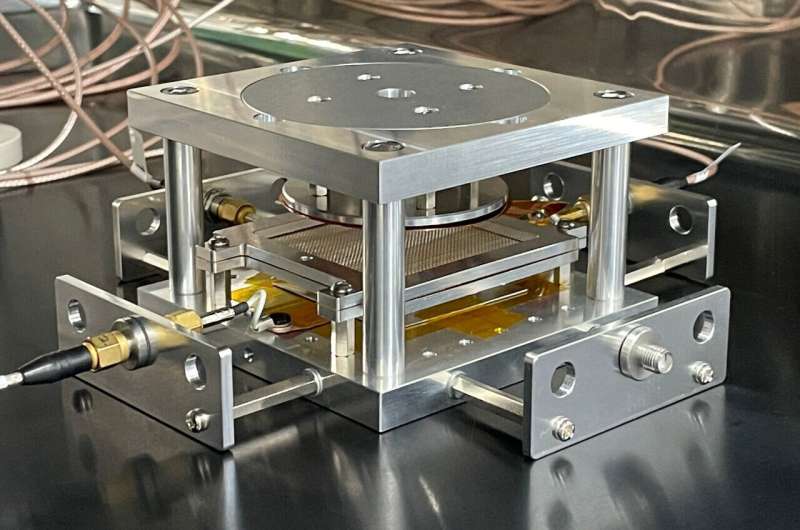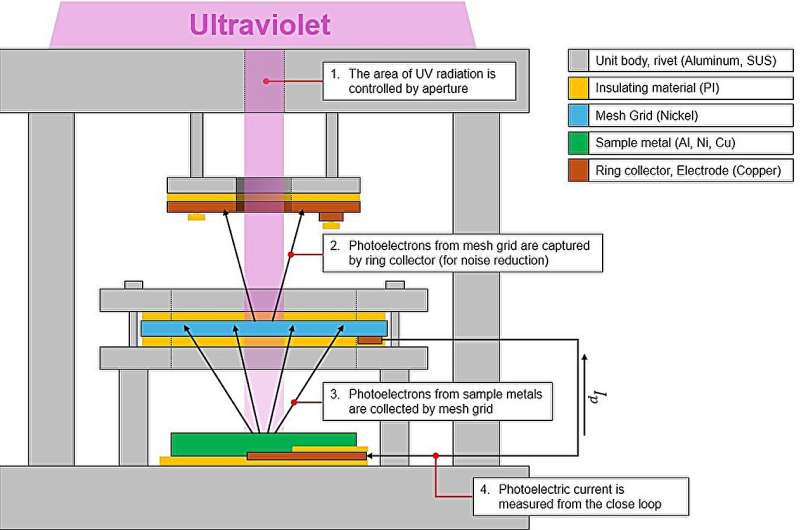This article has been reviewed according to Science X's editorial process and policies. Editors have highlighted the following attributes while ensuring the content's credibility:
fact-checked
trusted source
proofread
Korean researchers create an electrostatic environment that simulates the moon's surface

Continuous research is being conducted globally on using the moon as an advanced base for deep space exploration, and Korea is no exception in these efforts. The Korea Institute of Civil Engineering and Building Technology (KICT) successfully implemented an electrostatic environment that simulates the moon's surface conditions, not in space but on Earth. The researchers also assessed its performance and effectiveness.
Among the most serious threats in executing lunar missions is the moon's surface environment, which is electrostatically charged. Due to its extremely thin atmosphere, the moon is directly exposed to solar ultraviolet rays, X-rays, solar wind, Earth plasma, etc. Thus, clouds of dust on the moon exhibit strong static electricity. The moon's electrostatic environment is positively charged during the day and negatively charged during the night.
Given that the moon has nearly no atmosphere, dust can be easily blown away even by small impacts due to the minimal air resistance. Electrostatically charged regolith particles may cause severe damage to space exploration devices when they become stuck on them.
For example, when stuck on PV cells, these particles degrade electricity generation efficiency. In manned missions, they can damage space suits that protect astronauts or penetrate the respiratory system, resulting in life-threatening consequences.
KICT's research team, led by Dr. Shin Hyusoung (along with senior researcher Chung Taeil and Dr. Park Seungsoo), developed a chamber designed to simulate electrically charged conditions. The aim is to implement an electrostatic environment that resembles the moon's surface.

The chamber developed by KICT incorporates ultraviolet lamps, electronic beams, and plasma generators to positively or negatively charge the surfaces of test objects. Going forward, this equipment can be used to electrostatically charge a replica of lunar soil using ultraviolet radiation and electron beams. It will help to determine how much material adheres to rovers and to anticipate potential problems.
This technology goes beyond simply conducting electrostatic charging to simulate the moon's electrically charged environment under various conditions, such as day or night environments while being influenced by Earth plasma.
The greatest achievement of this research work lies in the developed equipment's ability to measure, in a quantitative and independent manner, the amount of photoelectric current generated, which has the most significant effect on the charging of lunar dust during the day of the moon. The error between the experimental measurement obtained in this research and the corresponding theoretical value was within approximately 5%, demonstrating the reliability of the developed technology.
As such, KICT's attempts have been successful not only in reproducing a moon-like environment where soil dust remains electrostatically charged but also in developing assessment technology for it. This research work has laid the groundwork for equipping a large-scale dirty thermal vacuum chamber (DTVC) with the developed equipment to implement an electrostatically charged environment and further assess its performance.
Dr. Shin, Hyusoung, who led this project, said, "Our research presents the possibility of effectively integrating the full-size DTVC, developed by Korea for the first time in the world, with lunar dust charging technology. This solution will serve as a test bed for a series of technologies to implement in-situ resource utilization (ISRU) on the moon in the future, addressing and responding to a range of potential technological challenges posed by electrically charged lunar dust."
The work is published in the journal Aerospace.
More information: Seungsoo Park et al, Design and Validation of a Photoelectric Current Measuring Unit for Lunar Daytime Simulation Chamber, Aerospace (2024). DOI: 10.3390/aerospace11010069





















